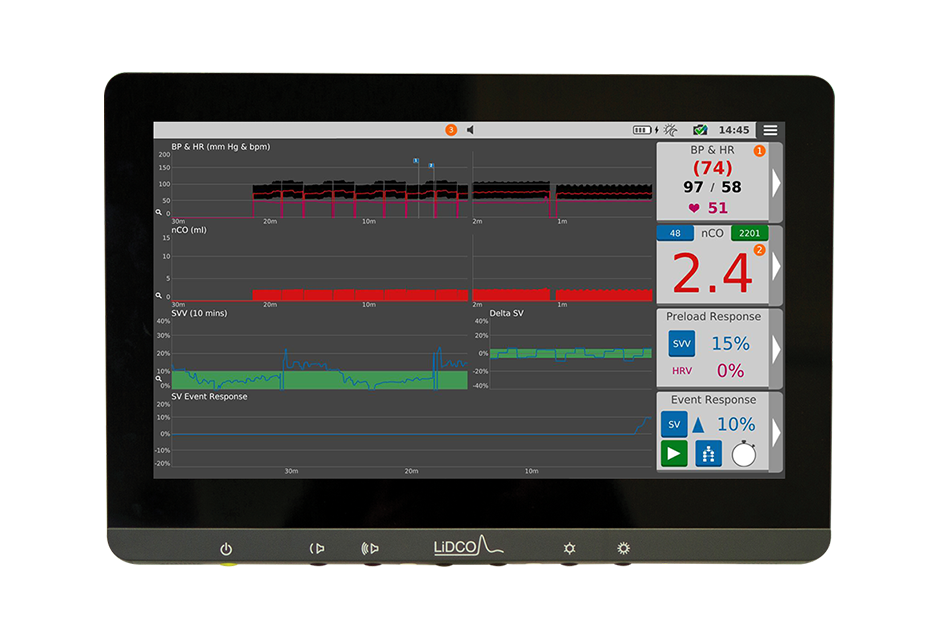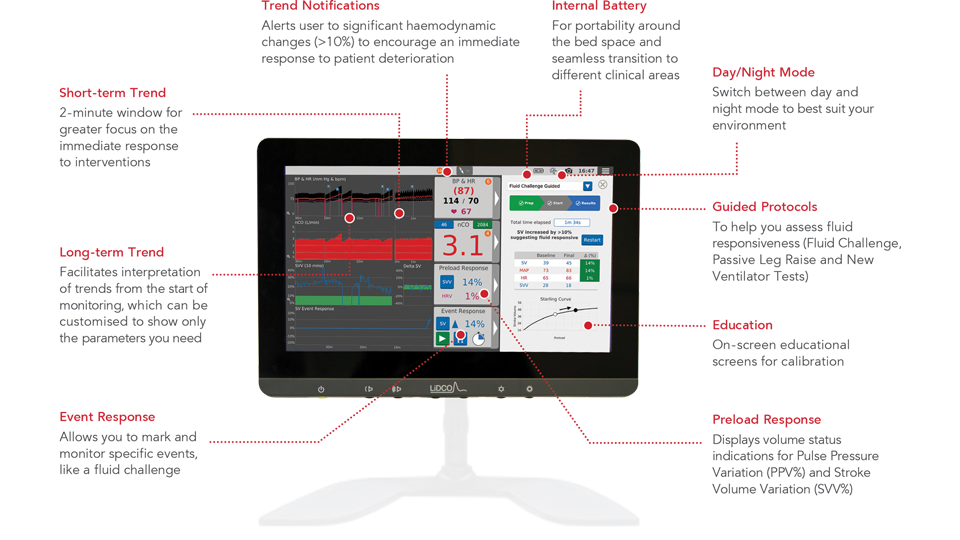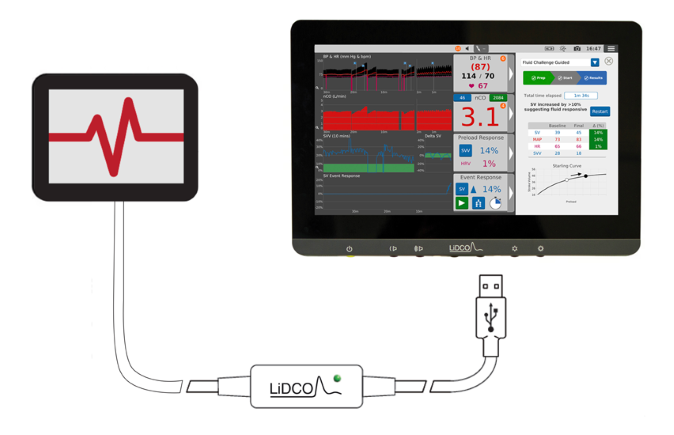Home / LiDCO Haemodynamic Monitoring System
LiDCO Haemodynamic Monitoring System

Masimo LiDCO™ Haemodynamic Monitoring System
The LiDCO Haemodynamic Monitoring System provides beat-to-beat advanced haemodynamic monitoring to support informed decision-making in high-acuity care areas such as the Operating Room.
- Uses already existing arterial line and blood pressure transducer to monitor haemodynamic parameters
- PulseCO™ algorithm converts beat-to-beat blood pressure into its constituent parts, flow and resistance, scaled to each patient's age, height, and weight
- Proven to be reliable on patients on vasoactive drugs1
Clinical Evidence
Clinical Evidence
Reductions in Postoperative Complications and Costs
- In a randomised controlled trial of 743 patients undergoing major abdominal surgery, researchers found haemodynamic optimisation with LiDCO led to a 20% reduction in postoperative complications and, as a result, patients monitored with LiDCO were on average $530 less expensive to treat than control patients who were not monitored.2
Reductions in 30-Day and 180-Day Mortality
- In a study comparing the outcomes of 600 emergency laparotomy patients, researchers found that, following the implementation of a program including LiDCO technology, there was a significant decrease in mortality at 30 days (from 21.8 to 15.5%) and 180 days (from 29.5 to 22.2%).3
Parameters and Indicators
Parameters and Indicators
The beat–to–beat parameters displayed by the LiDCO monitor provide immediate feedback on a patient’s fluid and haemodynamic status.
The LiDCO monitor provides the following parameters:
- Stroke Volume (SV): The amount of blood pumped by the left ventricle of the heart in one contraction
- Cardiac Output (CO): The amount of blood the heart pumps through the circulatory system in a minute, calculated by multiplying the stroke volume by the patient’s heart rate
- Systemic Vascular Resistance (SVR): Reflects the resistance to flow and is calculated as the quotient of pressure and cardiac output
- Oxygen Delivery (DO2): The amount of oxygen delivered to the issues, calculated as the product of cardiac output and oxygen concentration
- Stroke Volume Variation (SVV): A dynamic variable that can predict fluid responsiveness in mechanically ventilated patients, SVV is the variation in stroke volume across at least one respiratory cycle
- Pulse Pressure Variation (PPV): Another dynamic variable that can predict fluid responsiveness in mechanically ventilated patients, PPV is the variation in arterial pulse pressure across at least one respiratory cycle
Key Features
Key Features

Easy Setup and Operation
Easy Setup and Operation
The LiDCO Monitor is designed for efficient setup and simple operation, with an intuitive, easy-to-interpret display—facilitating effective haemodynamic management even on those patients who are haemodynamically unstable and require fluid and drug support.

- Plug and play operations using the invasive blood pressure output port on the vital signs monitor
- Monitor using the existing blood pressure transducer, eliminating the need for an additional disposable
RESOURCES
References:
- 1.
LiDCO data on file.
- 2.
Pearse R et al. Effect of a perioperative, cardiac output-guided haemodynamic therapy algorithm on outcomes following major gastrointestinal surgery: a randomized clinical trial and systematic review. JAMA 2014; 311(21):2181-90.
- 3.
Tengberg LT et al. Multidisciplinary perioperative protocol in patients undergoing acute high-risk abdominal surgery. Br J Surg 2017; 104:463-471
For professional use. See instructions for use for full prescribing information, including indications, contraindications, warnings, and precautions.
PLCO-005868/PLM-12985B-0422

